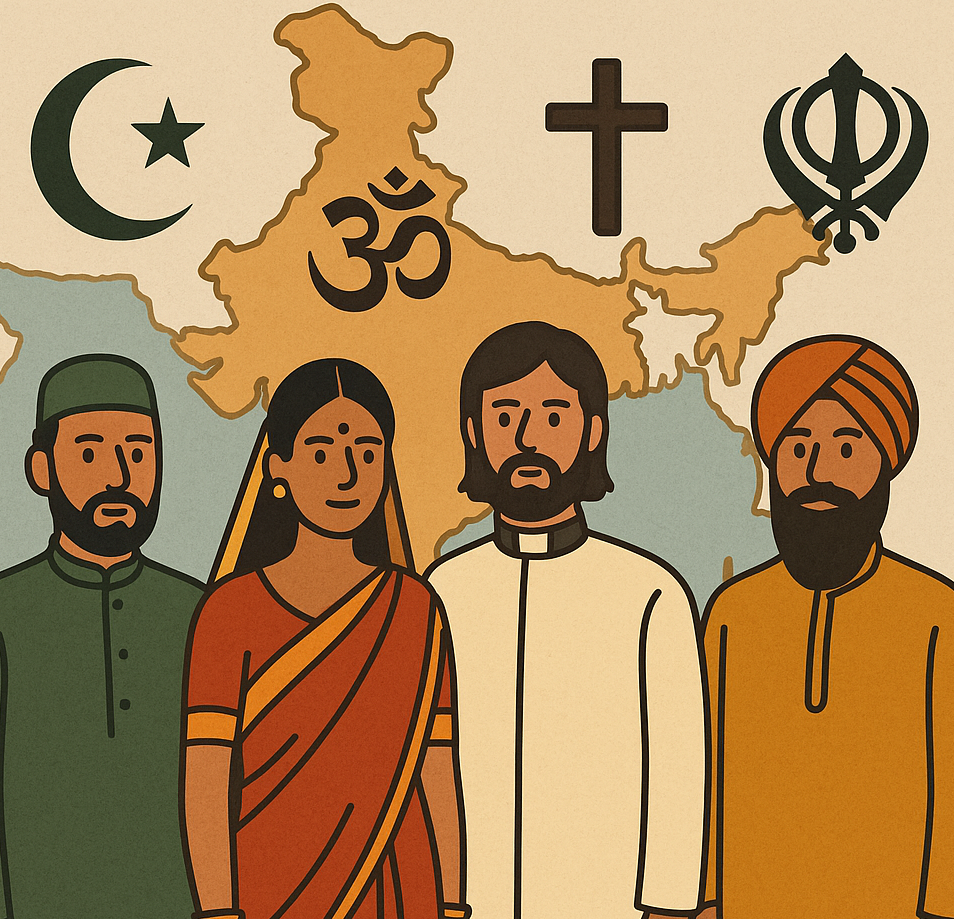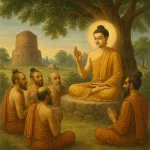Religious Freedom in India & South Asia: A 2025 Snapshot
South Asia, home to one-fourth of the world’s population, is a land where spirituality shapes daily life. India, Pakistan, Bangladesh, Sri Lanka, Nepal, Bhutan, and the Maldives — each has a distinct religious mosaic that reflects centuries of coexistence, dialogue, and tension. In 2025, religious freedom across this region stands at a defining moment. While many South Asians still enjoy vibrant expressions of faith, the space for pluralism and tolerance faces new pressures — from politics to digital polarization.
Religious freedom today is not just about worship; it’s about dignity, dialogue, and diversity. And how South Asia balances these values will determine its social harmony and global image in the years to come.
India: Balancing Diversity and Identity
India continues to represent the world’s most diverse spiritual landscape — home to nearly every major religion. The Constitution guarantees freedom of belief and practice, and the idea of Sarva Dharma Sambhava (respect for all religions) remains deeply embedded in the national ethos.
In 2025, the challenge is less about diversity itself and more about managing its interpretation. Political polarization, misinformation, and regional tensions occasionally threaten the delicate fabric of religious coexistence. Yet, India also showcases inspiring examples of interfaith harmony — from Sufi shrines shared by Hindus and Muslims to Sikh langars feeding people of all backgrounds.
Religious festivals like Diwali, Eid, Christmas, and Buddha Purnima are celebrated collectively in cities and villages alike, reaffirming India’s plural identity. Faith-based organizations also play vital roles in education, healthcare, and disaster relief, making religion not a divider, but a partner in nation-building.
However, as debates around conversion, temple-mosque disputes, and digital hate continue, India must reaffirm that faith flourishes best when equality and respect are protected by both law and culture.
Pakistan: Between Faith and Freedom
Across the border, Pakistan’s religious landscape is defined by Islam’s deep cultural roots. Yet, the conversation around religious freedom remains complex. The state identifies as an Islamic republic, but minority communities — including Christians, Hindus, Sikhs, and Ahmadis — continue to seek fuller recognition of their rights.
In recent years, some progress has been made through education reforms and community dialogues, but social biases and blasphemy laws still pose serious challenges. Civil society groups and religious scholars are increasingly advocating for inclusive interpretations of Islam that protect all citizens.
In 2025, Pakistan stands at a crossroads — balancing its religious identity with global calls for pluralism and reform. The emergence of young leaders, many educated abroad, is bringing a gradual shift in narrative toward tolerance and civic inclusion.
Bangladesh: Faith and Modernity Intertwined
Bangladesh, founded on secular principles, has historically championed cultural pluralism. Islam is the majority faith, but Hindu, Buddhist, and Christian communities have long contributed to the nation’s social and artistic identity.
In 2025, Bangladesh continues to emphasize religious tolerance as a core national value, even as urbanization and political contestations sometimes test its boundaries. Interfaith harmony is visible in rural areas, where people of different religions celebrate festivals together.
Digital awareness campaigns and education programs are helping counter extremism and promote civic unity. However, the rise of social media misinformation remains a challenge, occasionally triggering localized tensions. Bangladesh’s success will depend on its ability to preserve secular governance while nurturing its spiritual heart.
Sri Lanka and Nepal: Searching for Balance
In Sri Lanka, the shadow of past ethnic and religious conflicts still lingers. While Buddhism holds a special constitutional place, Christian, Hindu, and Muslim communities continue to advocate for equal treatment. Since 2022, interfaith initiatives and youth peace-building programs have shown promise in healing old wounds.
Meanwhile, Nepal, once the world’s only Hindu kingdom, is now a secular republic. Its transformation has expanded religious freedoms, allowing open practice of Buddhism, Christianity, and indigenous beliefs. Yet, debates continue over the definition of “secularism” and the role of religion in public life.
Both nations reflect the broader South Asian trend — an effort to protect spiritual diversity while navigating political sensitivities and historical memories.
Bhutan and the Maldives: Faith in Small Nations
Bhutan’s approach to religion is deeply philosophical. Guided by the concept of Gross National Happiness, it treats spirituality as a path to well-being rather than division. While Buddhism is predominant, minority faiths like Hinduism are respected within its harmonious social model.
In contrast, the Maldives presents a more restrictive scenario. As an officially Islamic nation, it limits public expression of other religions, especially for citizens. However, quiet reforms in education and cultural policy hint at a gradual opening, especially with growing tourism and international engagement.
Both countries illustrate how scale and identity influence religious freedom — Bhutan leaning toward plural coexistence, and the Maldives cautiously balancing faith and modernity.
Regional Trends: Shared Challenges, Shared Hopes
Across South Asia, three key trends define the 2025 landscape of religious freedom:
Digital polarization vs. digital dialogue: Social media often amplifies hate, but it also empowers voices of peace and understanding. Interfaith influencers, online campaigns, and youth movements are reclaiming the digital space for harmony.
Faith and politics intertwined: Religion continues to influence elections, policies, and public opinion. The challenge lies in ensuring that political use of faith does not turn into exclusion.
Youth reimagining spirituality: A new generation is engaging with religion in more personal, inclusive, and ethical ways — focusing on compassion and community rather than strict identity labels.
These shifts suggest that while institutional religion faces tension, spiritual pluralism in South Asia remains resilient and adaptive.
Faith as a Force for Unity
Religious freedom in India and South Asia is neither declining nor static — it is evolving. Despite tensions and inequalities, the region’s deep-rooted spiritual traditions continue to inspire compassion and coexistence.
In 2025, the test of South Asia’s future lies not in the dominance of any single faith, but in the ability of all faiths to coexist respectfully. The path forward requires courage — from governments, communities, and believers — to protect diversity as a divine gift, not a threat.
If the region succeeds, it will not only uphold its moral heritage but also set an example for the world: that even in the age of algorithms and politics, the human spirit can still choose harmony over hostility, and freedom over fear.
~Religion World Bureau









